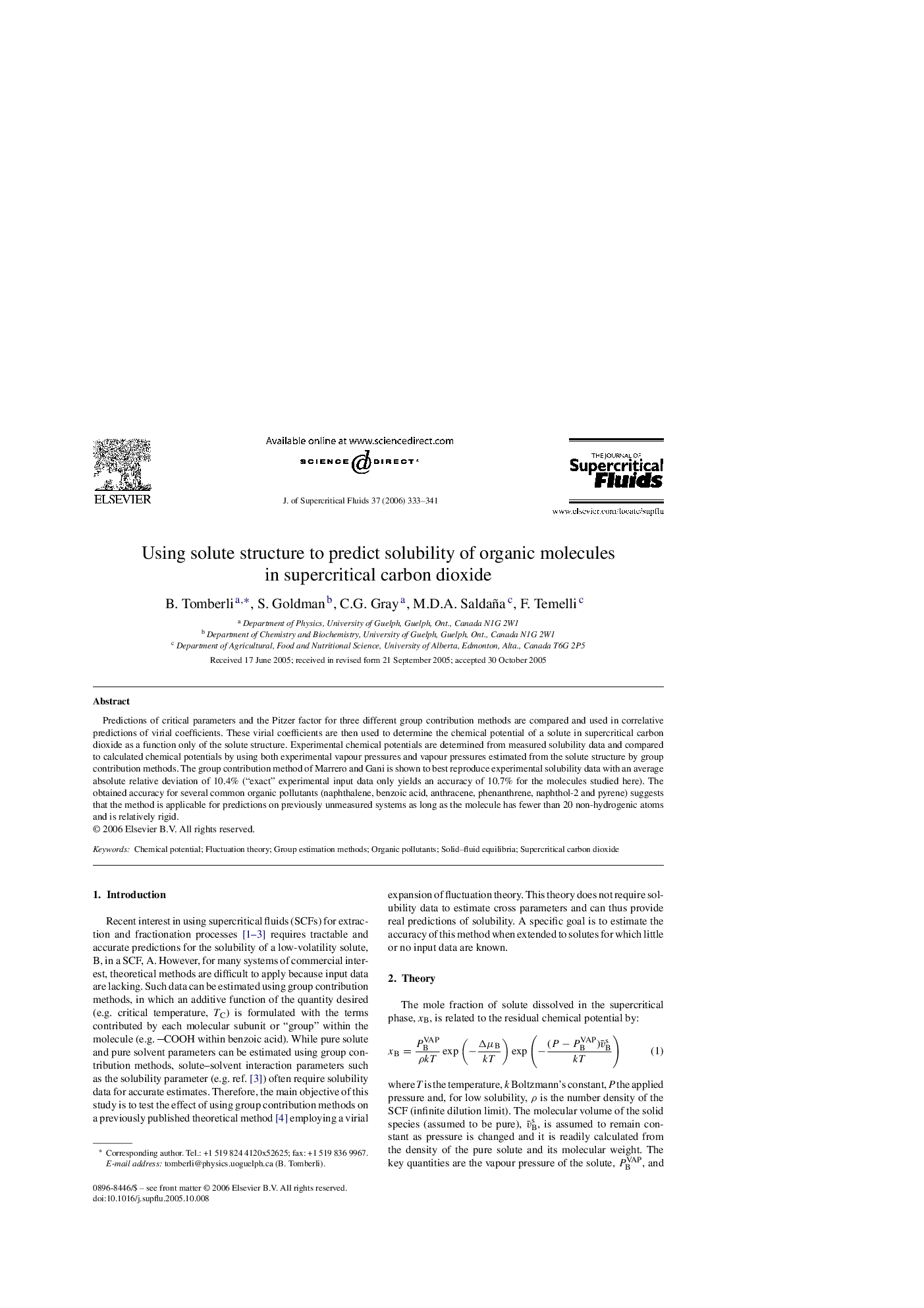| Article ID | Journal | Published Year | Pages | File Type |
|---|---|---|---|---|
| 232398 | The Journal of Supercritical Fluids | 2006 | 9 Pages |
Predictions of critical parameters and the Pitzer factor for three different group contribution methods are compared and used in correlative predictions of virial coefficients. These virial coefficients are then used to determine the chemical potential of a solute in supercritical carbon dioxide as a function only of the solute structure. Experimental chemical potentials are determined from measured solubility data and compared to calculated chemical potentials by using both experimental vapour pressures and vapour pressures estimated from the solute structure by group contribution methods. The group contribution method of Marrero and Gani is shown to best reproduce experimental solubility data with an average absolute relative deviation of 10.4% (“exact” experimental input data only yields an accuracy of 10.7% for the molecules studied here). The obtained accuracy for several common organic pollutants (naphthalene, benzoic acid, anthracene, phenanthrene, naphthol-2 and pyrene) suggests that the method is applicable for predictions on previously unmeasured systems as long as the molecule has fewer than 20 non-hydrogenic atoms and is relatively rigid.
